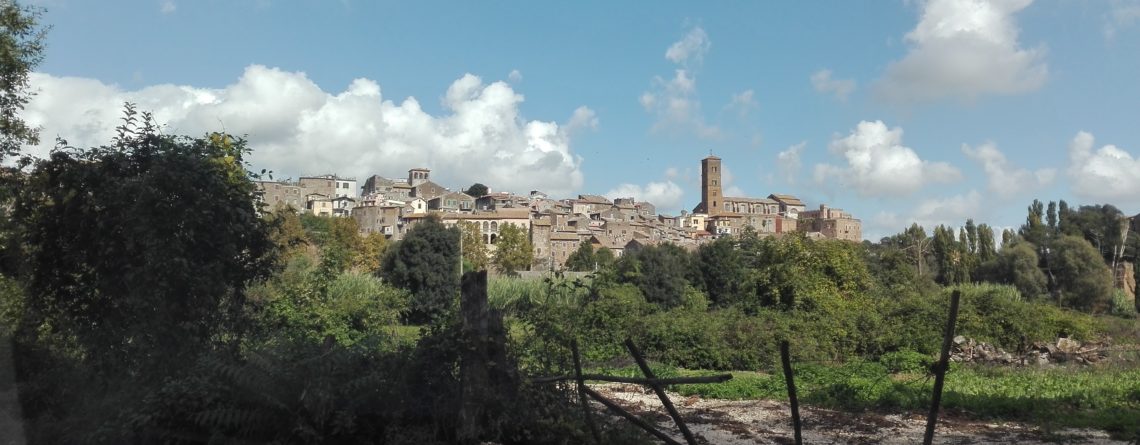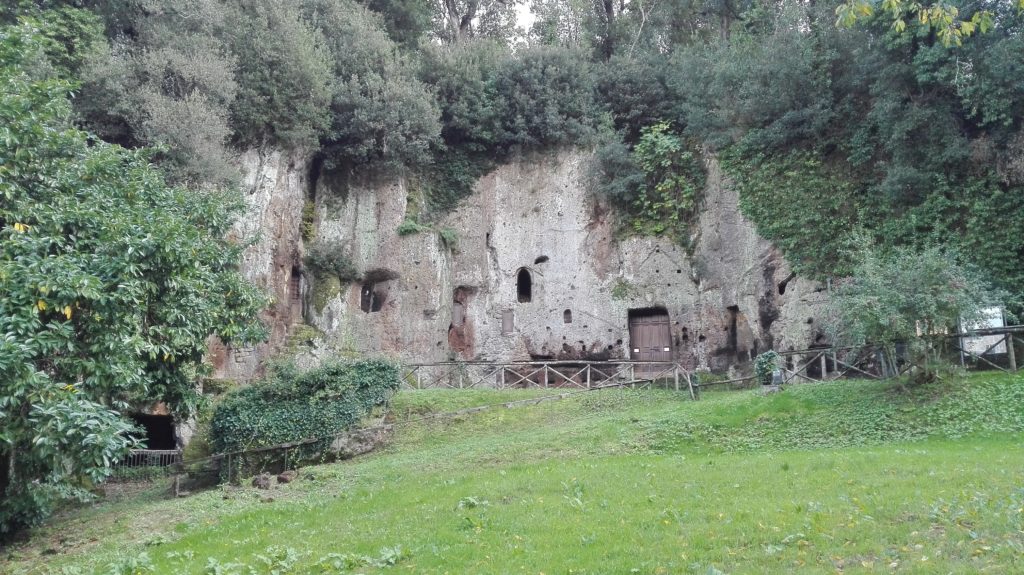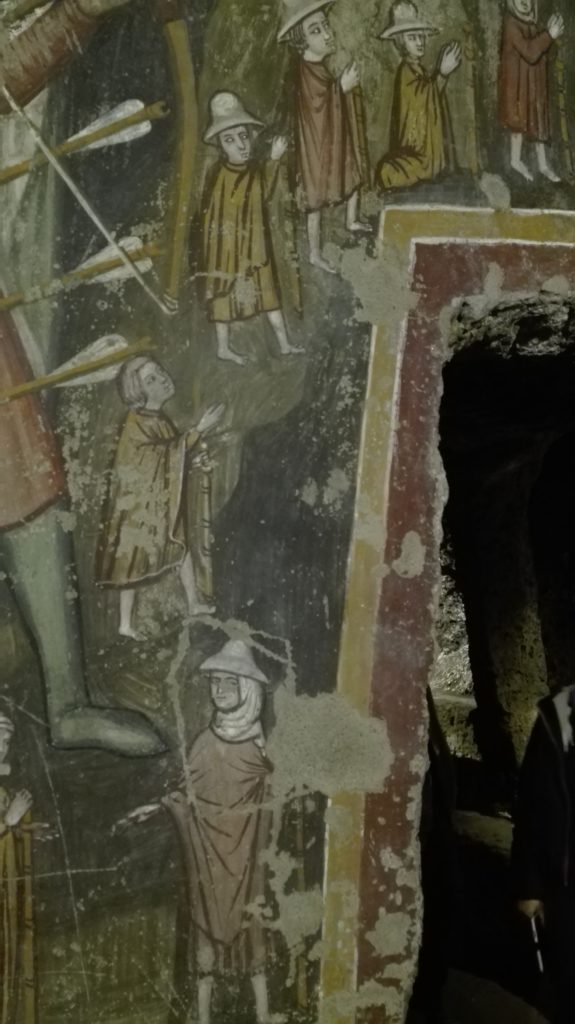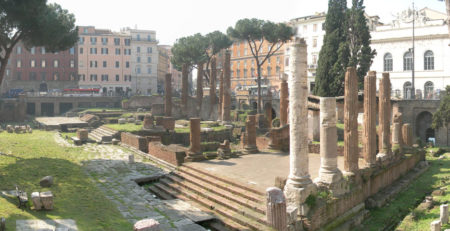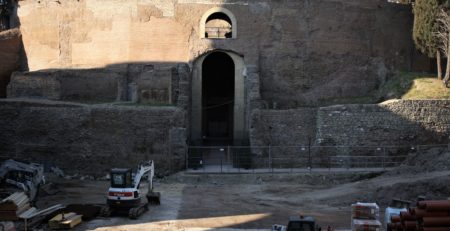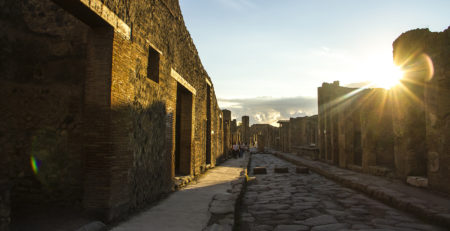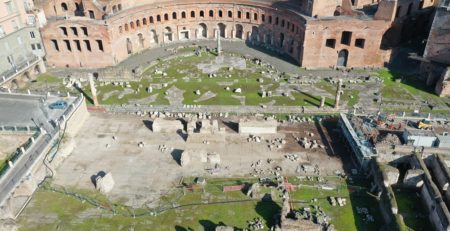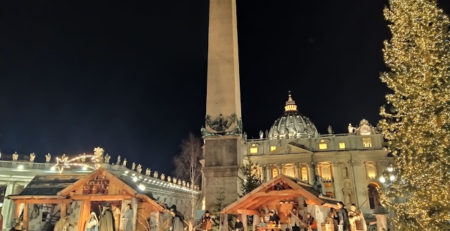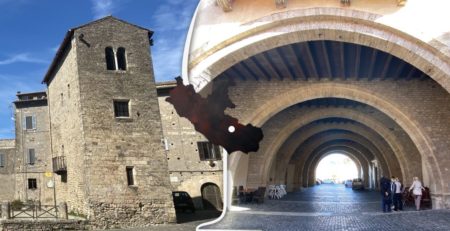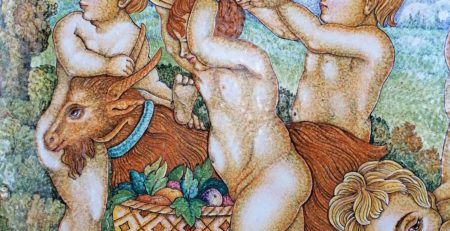TRAVELS IN LAZIO: SUTRI
Deep in the green Viterbese valley of Lazio is Sutri, one of those rare small town finds, where not only is it charming but rich in historical sites dating from the Bronze Age to Baroque. Nowadays the town has been inducted into Italy’s national list of most beautiful towns (I Borghi Più Belli d’Italia) and has become a favorite for pilgrims traveling along the Via Francigena, which passes through on the way to the Vatican. Sutri is only about an hour’s drive from the Vatican or about 14 hours by foot – the preferred method for a pilgrim after all.

Viewing Sutri 
Markers for the Via Francigena pilgrimage
The history of Sutri (formerly Sutrium) is testified by the numerous archaeological finds belonging to different eras. Its origins are very ancient, probably dating back to the Bronze Age. According to legend it was founded by an ancient population of navigators, the Pelasgians. While the more popular legend states that the god, Saturn, had a hand in its founding. He appears on horseback with three ears of wheat in his hand as part of the official coat of arms of the municipality.
A particularly strong influence on the townscape is thanks to the Etruscan domination, who developed Sutri into a major agricultural and commercial center. One of the more fascinating sites to visit is the Park of the Ancient City of Sutri, a vast Etruscan necropolis carved into tufa stone, with tombs ranging from the 6th to the 4th century BCE. The Etruscans are little known outside of Italy, yet their culture was fundamental for the ancient Romans. Most likely this is because their territory was limited to Tuscany and Lazio, so this park is a great introduction to Etruscan history.
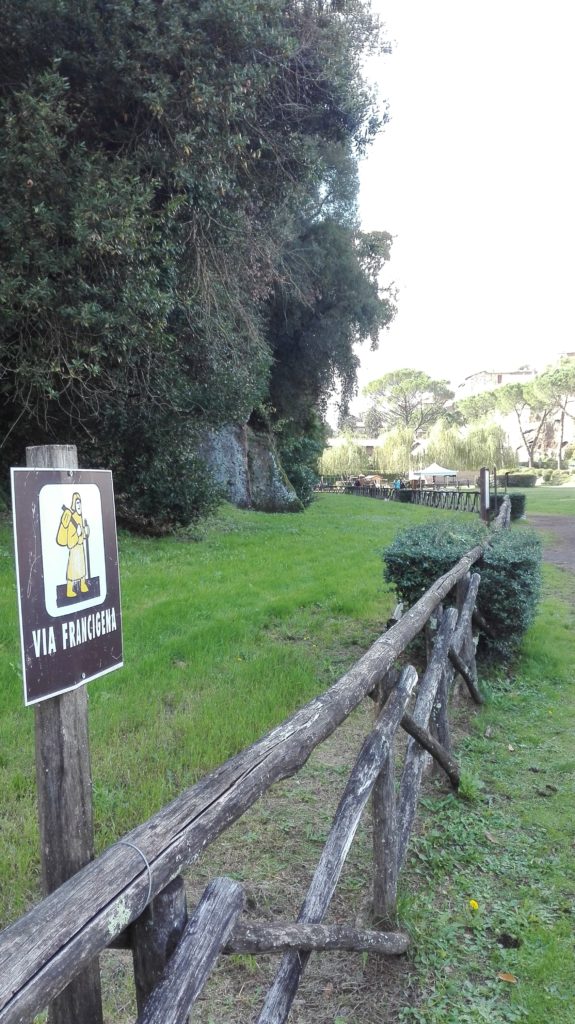
Park of the Ancient City of Sutri filled with Etruscan tombs 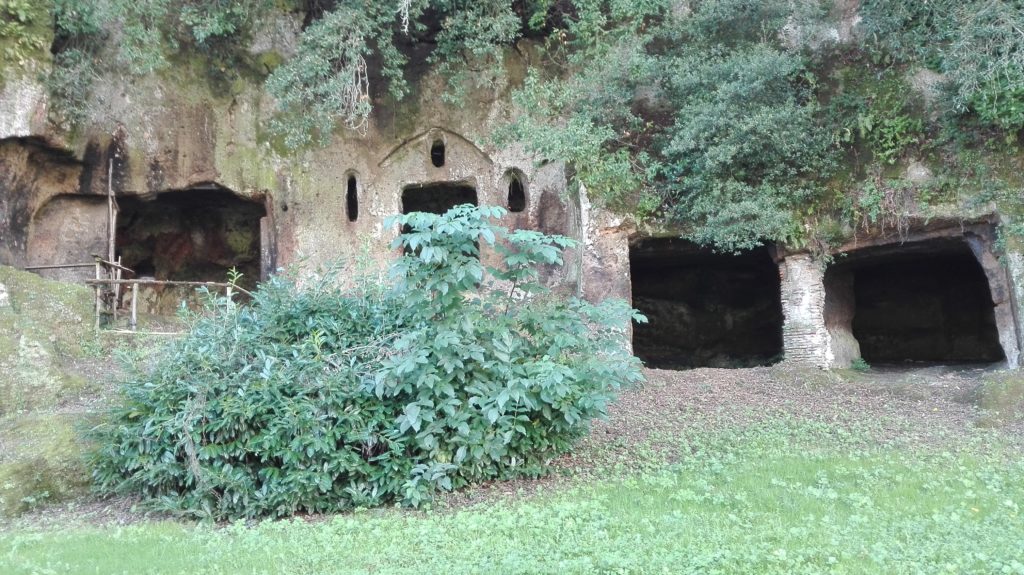
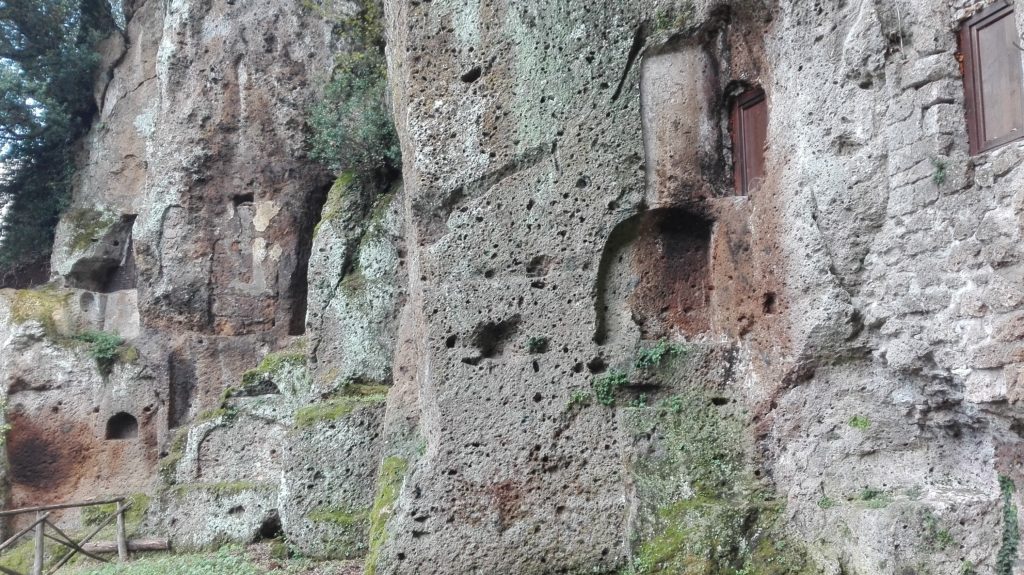
When the ancient Romans did eventually conquer Sutri in 383 BCE, it became the passage point of several barbarian hordes traveling along the Via Cassia to Rome, acting as a bulwark of the consulate and the empire. We recommend stopping in the ancient Roman amphitheater, which archeologists have dated to the time of Caesar Augustus (27 BCE – 14 CE). It was completely excavated into the tufa stone and conveniently located right next to the necropolis.
In the first centuries of the Middle Ages – after the fall of the Roman Empire – Sutri suffered the fate of many other nearby fiefdoms, passing from hand to hand between various powerful families until Charlemagne decided to assign it to his disinherited sister. According to legend, she gave birth here, in a cave, to the famous Orlando, nominated paladin of France by Charlemagne.
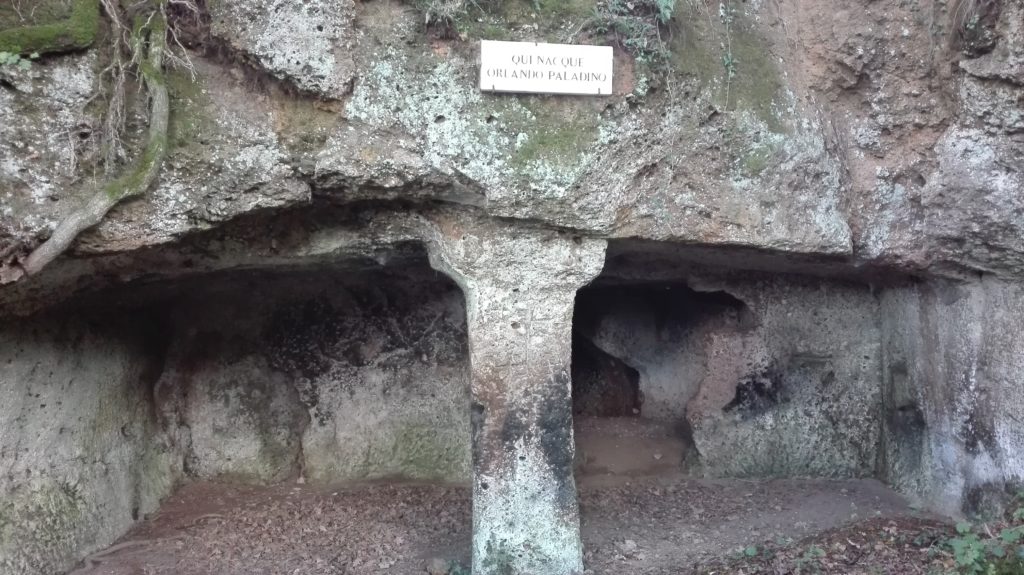
To see the medieval remains of today, visit the Etruscan walls engulfed by the medieval ones and a Roman Age Mithraeum – to worship the god Mitra – later transformed during the High Middle Ages into the Church of the Madonna del Parto. Inside is one of the first frescoes of traveling pilgrims, solidifying Sutri’s long relationship with the Vatican.
One last gem before moving onto Sutri’s tastiest dishes.
The romantic early 18th c. Villa Savorelli overlooks a groomed Italian Renaissance style garden open to visit: an organized labyrinthine like box hedges embellished with a peperino fountain where a pinecone motif rests.
The typical local product of Sutri is il fagiolo di Sutri (beans) which, according to popular legend, was able to relieve the pain of a gout attack Charlemagne had. To this day, there is a festival dedicated to them, where the beans are served in characteristic terracotta bowls. Also try the fettucine pasta with porcini mushrooms, tagliatelle pasta with lepre (hare) and the tozzetti (cookies) with hazelnuts grown in the area since the Roman Empire.
For questions about traveling to Sutri and to customize a culturally sustainable trip to Lazio or beyond, contact our Bookings Team: info@italysbestrome.com
Buon viaggio!
All images thanks to Italy’s Best staff.

